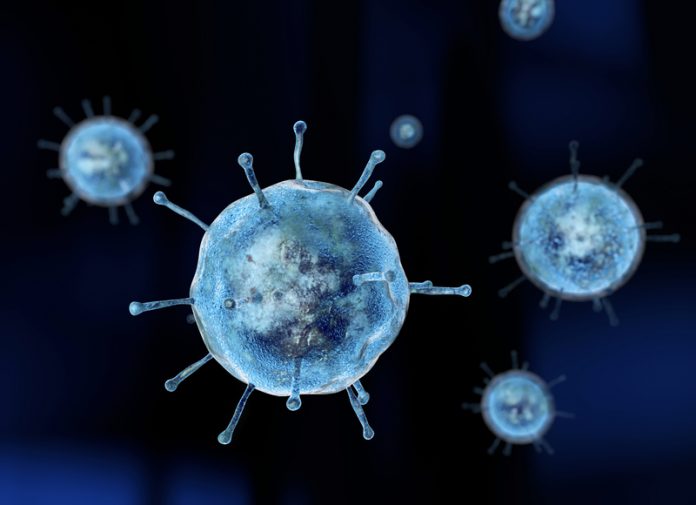Prof Colin J Suckling OBE DSc FRSE, Research Professor of Chemistry at the University of Strathclyde imparts his expertise on the worldwide research challenge of infectious disease and argues that this is both diverse and everywhere
If it were just a few bacteria infecting a few unlucky people in a developed country with a good health care system, would there be any political interest? If the cattle in East and West Africa are suffering from debilitating parasitic disease that threatens their lives and the livelihoods of their farmers, would there be any media coverage? If villagers in central India have no cure for the visceral diseases that affect them, would there be a response? Probably not.
On the other hand, when hospital wards are closed because of Escherichia coli or Clostridium difficile infections, or when tuberculosis (TB) starts to reappear in urban communities, or when travellers return from the tropics with malaria the attention of politicians, the media, and the pharmaceutical industry (to some extent at least) is engaged and the rhetoric of antimicrobial resistance – (‘the antibiotic apocalypse’, for example) is launched. Reports urging action abound, most recently from the OECD.
Our response to this worldwide challenge in our research at the University of Strathclyde took a big risk, one that would have been inappropriate in an early stage industrial project. We chose to investigate a class of compounds that target DNA, the molecule that bears all of the basic information necessary for life that is present in all living cells, including our own. By targeting DNA, it would be expected that our compounds would be able to shut down some essential biological operations of the cells and, thereby, lead to their death.
Moreover, because more than one essential pathway is likely to be affected, our compounds would be expected to be less susceptible to the emergence of resistance than a drug discovered according to the conventional single target-single drug paradigm of big pharma. With this strategy, our compounds, the minor groove binders or S-MGBs as we call them, should be minimally susceptible to the development of resistance, ideal for the AMR era, and moreover, potentially effective against infectious organisms worldwide.
There remains, however, a big problem and challenge. If the toxic effect of the S-MGB takes place in the cells of the infectious agent, bacterium, fungus, or parasite, all is well; but if the S-MGB harms the patient, human or animal, the compound is useless as an antimicrobial because of its patient toxicity. The challenge, which is the big risk from the industrial point of view, is to obtain sufficient selectivity between patient and infectious organism to provide a cure.
In this sort of circumstance, it is appropriate for academic laboratories to play a pioneering role. We have made use of imaginative heterocyclic chemistry to obtain a wide range of novel S-MGBs with different property profiles, thereby, allowing us to select really promising compounds. So how well have we done?
Let’s take a few criteria, increasing in stringency leading towards a marketable drug. In the AMR era, the first test is whether a compound like one of our S-MGBs is active in the laboratory against infectious organisms that are resistant to currently used drugs. The second test is whether an MGB is non-toxic to mammalian host cells in the laboratory so that there is a window of safety between killing the infectious organism and harming the patient. The third test is whether the compound is sufficiently potent to be clinically significant.
Happily, we now have S-MGBs that meet these criteria for infections caused by many bacteria, including so-called superbugs and bacteria that cause TB, and fungi and by parasites, including the malaria parasite but especially those that cause sleeping sickness and related diseases (trypanosomes). These results have come from collaborations with scientists in Europe, Australia, India, and South America.
Moving on in stringency, the next test is whether an S-MGB can cure the infection in a mouse or other small rodent; this is what is referred to as a proof-of-concept test because it shows whether or not the potential drug can do what we want it to and treat the infection without harming the host animal. In academic projects, this is usually as far as we take the experimental programme. Again happily, we have proof-of-concept results for infections caused by Gram-positive infections, mycobacterial infections (TB), and parasitic infections caused by trypanosomes.
From this stage, we can move to a candidate drug, although usually not without the support of an industrial partner. Based upon its profile, many chemical and biological properties, compounds can be selected for full-scale development. This has been done so far for one of our S-MGBs, a compound for the treatment of Clostridium difficile infections. In the hands of our partner company, MGB Biopharma, it has now reached Phase 2 clinical trials results from which should be available in 2019.
During the past five years, there has been a major investment from public funds in research concerning all aspects of antimicrobial resistance. For economically important diseases that affect the human population, such as malaria and TB, there are many compounds in development supported by big pharma, some in the latter stages of clinical trials.
For other diseases and for animal use, the lower economic incentive for big pharma means that things are lagging, relatively speaking. The development of one antiparasitic drug for animal use was halted because of the economically unacceptably high cost of development. Time alone will tell whether the efforts of the past 10 years have been sufficient to protect human and animal populations against the ravages of infectious disease or whether in 20 years’ time the antibiotic apocalypse will not have been avoided but simply delayed.
Current and previous partners and collaborators in the international S-MGB project
Mike Barrett (University of Glasgow), Liam Morrison (Roslin Institute, University of Edinburgh), Kirsten Gillingwater (Swiss Tropical Public Health Institute), Vicky Avery (Griffith University), Reto Guler (University of Cape Town) and Mike Bromley (University of Manchester).
Please note: this is a commercial profile
Prof Colin J Suckling OBE DSc FRSE
Research Professor of Chemistry
Department of Pure & Applied Chemistry, University of Strathclyde
Tel: +44 (0)141 548 2271











